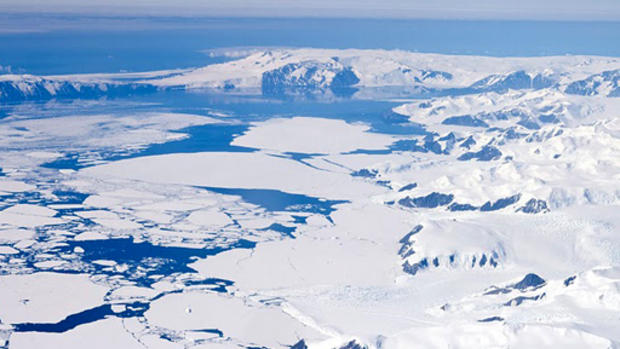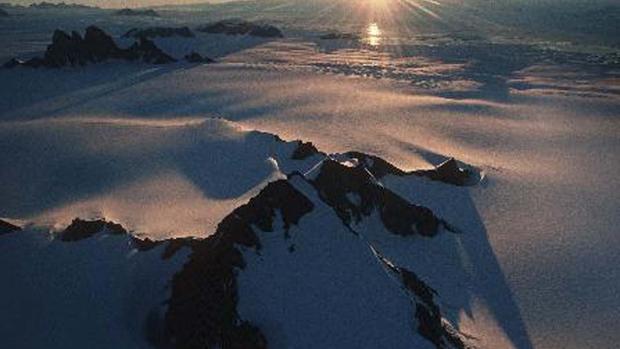Ice shelves are melting from the bottom up, studies show
The Antarctic ice sheet is losing volume in droves, leading sea levels to rise around the globe. Scientists have long thought that the majority of the loss starts when chunks of ice break off from the sides of glaciers, forming icebergs.
But two studies published this week show that there is another major source of melt: warmer ocean waters are eating away at the underbelly of submerged ice shelves.
Ice shelves serve as a barrier between glaciers and the sea, slowing the speed at which the glaciers dump ice into the sea (and, therefore, slowing the speed of ice loss). When the ice shelves thin out, the speed of ice loss increases.
In the Sept. 13 issue of the journal Science, Naval Postgraduate School oceanographer Timothy Stanton described that the ice is melting at rates as high as 2.36 inches per day.
"This is the first observation of the actual melt rate underneath the ice shelf," Standon told EcoAlert. "We have observations using remote sensing of various kinds, but these are actual in situ measurements." The measurements were collected in a joint effort between NASA and National Science Foundation (NSF) scientists who installed scientific instruments on and under the Pine Island Glacier in 2012.
The team's findings are supported by a second study, published Sept. 15 in the journal Nature.
Using satellite and climate model data, the University of Bristol, University of California and Utrecht University scientists compared measurements of snowfall over the ice sheet, ice thickness, flow of the ice, elevation of the ice shelves and rate of ice break off.
They found that the ice sheets that are already the thinnest are losing the most ice from their underbelly, to the tune of 90 percent. On other ice shelves, the underbelly melt accounts for about 10 percent of overall loss, so further research is needed to continue understanding other sources of ice melt.
"Understanding how the largest ice mass on the planet loses ice to the oceans is one of the most fundamental things we need to know for Antarctica. Until recently, we assumed that most of the ice was lost through icebergs," study author Jonathan Bamber, a professor at the University of Bristol's School of Geographical Sciences, said in a press release.
"Now we realize that melting underneath the ice shelves be the ocean is equally important and for some places, far more important. This knowledge is crucial for understanding how the ice sheets interact now, and in the future, to changes in climate."


